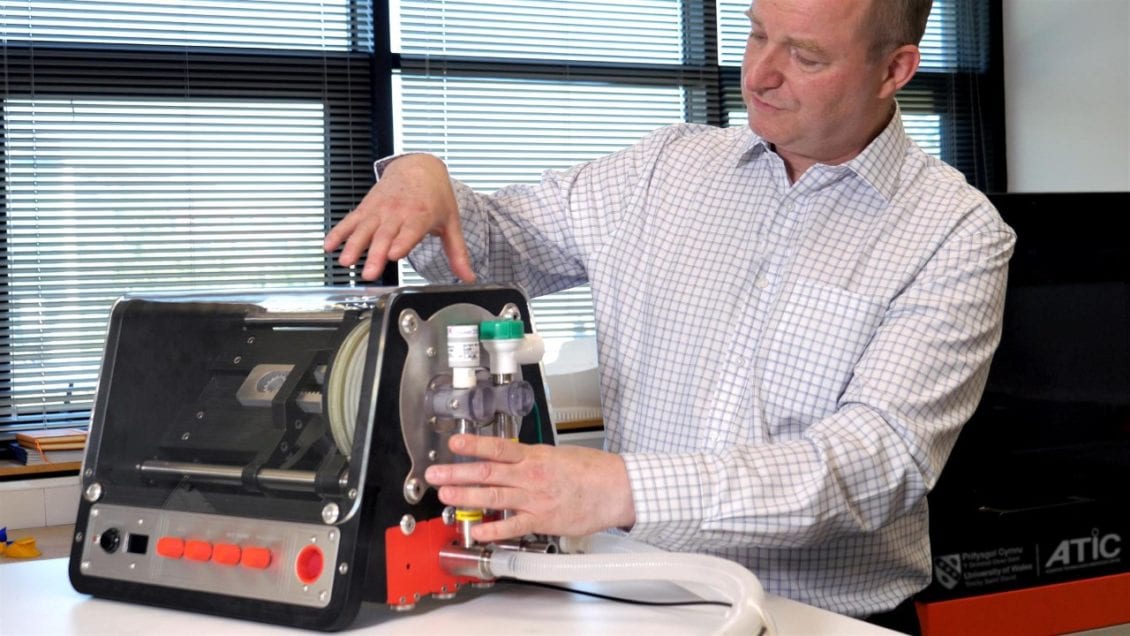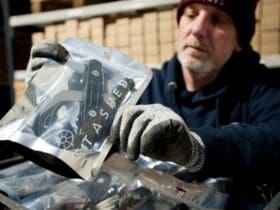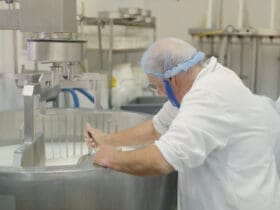UWTSD’s Assistive Technologies Innovation Centre (ATiC) together with a team of Swansea University doctors and engineers have designed a new ventilator that can be built quickly from local parts and – crucially – used even for patients with severe coronavirus.
Until now, ventilator designs could either be one or the other, but not both.
The new design, called CoronaVent-One, can be built easily from generic parts and plastic panels.
As well as saving lives, the new design can help create jobs and boost economic recovery because global demand for ventilators is likely to remain high as the pandemic continues.
Professor Ian Walsh, ATiC Director and Provost at University of Wales Trinity Saint David, Swansea, said: “The development of CoronaVent-One is an outstanding example of collaboration between Swansea’s two universities, the health board and industry partners. Our joint team has worked round the clock for the past two months and shown selfless commitment to the common cause of tackling the biggest global health challenge in modern times.”
The team behind the new design is led by Dr John Dingley and Dr Dave Williams, consultant anaesthetists in the NHS with teaching roles at Swansea University Medical School. In 2008, in response to the SARS pandemic, they designed and built a low-cost highly efficient ventilator for mass deployment which could be built from readily available components.
The team also includes experts from the ASTUTE 2020 team at Swansea University College of Engineering and Swansea University’s Healthcare Technology Centre and industry partners.
Ventilators are crucial in treating many patients with Covid19, helping them to breathe during treatment. In March Prime Minister Boris Johnson announced an open call for 30,000 ventilators within two weeks to treat expected mass casualties from the Coronavirus pandemic.
The problem is that existing designs can be either quick to build, or able to treat complex cases, but not both.
Designs that are quick to build can only be used to treat patients with mild lung injuries. On the other hand, the current models that are suitable for more complex cases need lots of different parts, which makes it impossible to build them quickly in large numbers because medical components are very difficult to obtain at present due to demand.
This is where the Swansea team’s new ventilator stands out. Its design, led by ATiC Innovation Fellow, Nick Thatcher, has been optimised to offer the best of both worlds.
ATiC is the University of Wales Trinity Saint David’s contribution to Accelerate. Co-funded by the Welsh European Funding Office European Regional Development Fund, the Welsh Government’s Health and Social Services Group, universities, the Life Sciences Hub Wales, and health boards, Accelerate helps enterprises turn their innovative ideas into new technology, products, and services for the health and care sector.
The programme is driving cutting-edge research and translating innovative ideas into new products and services to improve the health and wellbeing of those living in Wales.
The Corona Vent can be manufactured quickly and cheaply in bulk because all the components are generic and can be locally manufactured. It does not rely on long international supply chains which will enable Welsh industry to build long term resilience to respond to future health challenges. It can also run from any oxygen source, not just hospital supplies, and can be built by a wide range of manufacturers, not just aerospace companies.
At the same time, the CoronaVent also incorporates the sophisticated modes of operation needed to treat patients with severe Coronavirus infection, which would usually only be found on machines costing many times the price.
A small computer with an easy to obtain display allows full control of the main parameters for ventilating a CoVid-19 patient.
Dr John Dingley said: “Coronavirus infection rates in this country are currently stabilising. However further surges of Coronavirus and other pandemic virus infections are expected to occur in coming years, and it is essential that a stockpile of ventilators with suitable functionality is available. There is also a global need for low cost high specification ventilators in other countries affected by the pandemic.”
Dr Dave Williams added: “The CoronaVent can be manufactured in the UK and may provide valuable jobs and an export industry in the face of worldwide economic depression.”
Professor Johann Sienz, Operation Director ASTUTE 2020 at Swansea University College of Engineering, said: “The CoronaVent offers the best of both worlds: simple and cheap to build, yet suitable for even complex cases of coronavirus. Developing it has been a real team effort – doctors, engineers, designers and industry partners. We hope new partners will join us to help us take it forward, so it can be in use as soon as possible, creating jobs and saving lives.”
The Swansea ASTUTE 2020 team worked long hours fully supported by the College’s engineering workshop team, seeking innovative solutions, and where parts were designed and made regularly within 24 hours, including over the weekend. During the development there was an incredibly level of energy in the team.
The team are about to seek regulatory approval for their design and are now looking for partners and investors to take the device into mass production.








Leave a Reply
View Comments